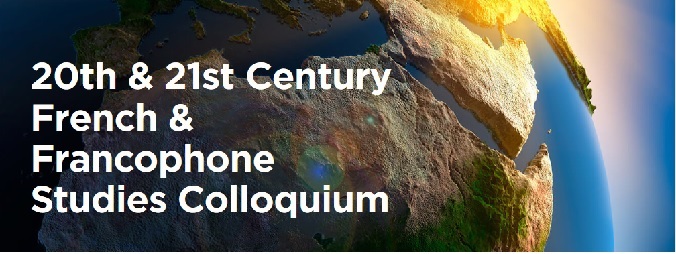Modern Languages and Literatures, Department of

20th and 21st Century French and Francophone Studies International Colloquium
Date of this Version
4-2020
Document Type
Presentation
Citation
Messay, M (2020). “’Nous étions ici pour durer’: Memorialization and environmental advocacy in Véronique Tadjo’s En Compagnie des Hommes,” 20th & 21st Century French and Francophone Studies International Colloquium, University of Nebraska-Lincoln, March 26-28, 2020. https://digitalcommons.unl.edu/ffsc2020/
DOI: 10.32873/unl.dc.ffsc.020
Abstract
Detected for the first time in 1976 in Northern Zaire (now the Democratic Republic of Congo) and in Southern Sudan (now South Sudan), the Ebola virus has reemerged periodically mainly in Sub-Saharan Africa. The deadliest outbreak of Ebola occurred in Guinea, eventually spread to Liberia and Sierra Leone from 2014-2016. At the end, there were 28, 652 cases and 11, 325 deaths (cdc.gov). The outbreak generated international news coverage and sparked panic, especially once cases were reported in the U.S., in Spain and in the UK. It also incited Veronique Tadjo’s latest work, En compagnie des Hommes (2017), as she explains in an interview published in the Australian Journal of French Studies (2018) : “Étant de la Côte d’Ivoire et connaissant la Guinée et le Libéria ( beaucoup moins la Sierra Leone), je me suis dit que derrière ces images, il y avait des tas d’autres choses qui n’étaient pas dites, qu’il y avait des vies, des êtres, des histoires” (252). Beyond the desire to humanize the outbreak, she also insists on the need to remember the outbreak: “… une fois la maladie déclarée officiellement terminée, eh bien on n’en a plus entendu parler! […] Je me suis dit qu’on ne pouvait quand même pas oublier quelque chose qui avait été aussi terrifiant. Il faut continuer à réfléchir sur ce qui s’est passé et sur ce que l’avenir pourrait nous réserver” (252). Tadjo’s objectives are not surprising considering her previous works, especially L’Ombre d’Imana (2000) in which she undertook the arduous task of commemorating and bearing witness to the 1994 Rwandan genocide as part of the Fest’Africa project, ‘Rwanda: écrire par devoir de mémoire’. In the same spirit, with En Compagnie des hommes, Tadjo memorializes the victims and the heroes of the Ebola. The novel reflects this with its polyphonic structure that consists of 16 chapters narrated by different agents that were directly impacted by or implicated in the outbreak. Tadjo includes not only human agents but also includes chapters by a Baobab tree, a bat (the host) and the Ebola virus itself. Through all these narrators, Tadjo voices the trauma, the mercilessness of the virus, its sociological and economic impact as well as people’s resilience and solidarity. However, I intend to explore the text through an eco-critical lens. After the release of the novel, Tadjo expressed the ecological message of her novel and the relationship between ecology and literature in several interviews. For instance, in “Agir par l’imagination” ( 2018), an interview with Lucile Schmid, she remarks: “Pour que la conscience écologique soit renforcée et disséminée, il est essentiel que les arts accompagnent le travail des scientifiques. La literature a la faculté de s’immiscer dans la vie quotidienne des lecteurs. Elle peut aller ou la science s’arrête. […] il faut également agir par l’imagination, toucher l’homme dans sa représentation du monde et lui offrir des récits de transformation” (182). As such, I propose an analysis of the ecological issues raised within the text and the techniques she uses to guide the reader. I will begin my analysis with her portrait of the Baobab to demonstrate how the text bears witness to the connection between the inhabitants of the region and the environment, as well as the inhabitants’ environmentally violent practices. I will then study how, through several narrators, Tadjo depicts the negative impact of the Ebola virus on people’s connection to the natural world. Lastly, I will examine how Tadjo’s text expresses her hope of renewing human beings’ respect for nature. In this paper, I will argue that En compagnie des Hommes is a memorial to the environment and a call to action.
Included in
Comparative Literature Commons, French and Francophone Literature Commons, Other French and Francophone Language and Literature Commons


Comments
Copyright © 2020 M. Messay